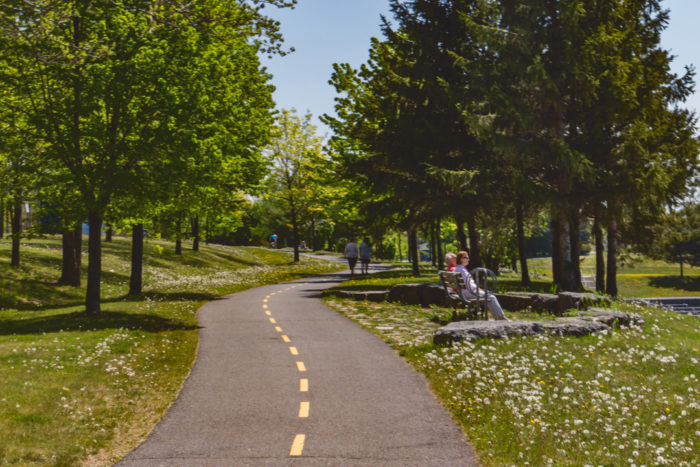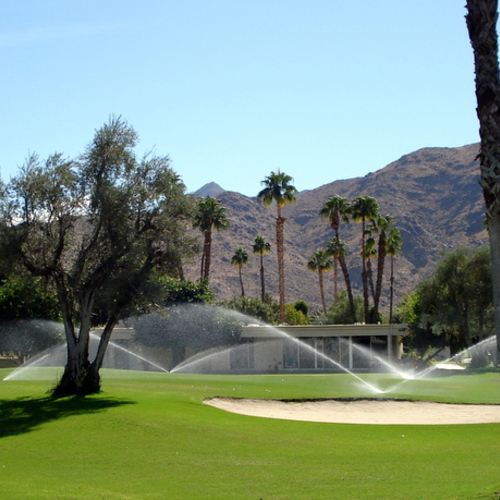
Image Credit: Michel Rathwell / CC BY 2.0 / Flickr
A national poll two years ago among 3,000 adults showed that home buyers favor developments that make it easy to walk to stores, restaurants, and other community gathering spots. Residential developers have apparently taken note.
An article posted at Construction Dive says that developers of master planned communities are increasingly likely to include more opportunities for walking, and they’re getting an especially positive response from Millennials — buyers in the 18-to-34 age bracket.
Adam Drucker, managing director at real estate consultant RCLCO, said that residential developments of a generation ago often had no dedicated walking paths, and sometimes no sidewalks at all. But in the last 10 years, developers have started to favor networks of walking trails over more conventional community amenities like golf courses.
“People want to engage with other people outside of their cars,” Drucker said. “Master planned communities (MPCs) are really focusing on providing walking opportunities and they’re getting good results… [Walkability] definitely isn’t a trend. This is now a permanent part of development.”
Millennials show the most interest. The poll by the National Association of Realtors found that age group preferred walking over driving by 12 percentage points, a wider margin than any other generation. Millennials said that they wanted to live within walking distance of shops and restaurants, favored a short commute, and were most likely to use public transportation.
Among all respondents, 77% said that being within an easy walk of community features like shops and parks was either very important or somewhat important (only 7% said that was not at all important); 85% said having sidewalks and places to take walks were very important or somewhat important.
Planned communities respond
Developments such as the 7,200-acre Walsh community in Fort Worth, Texas, put a premium on open spaces, parks, and trails that connect different parts of the community, Construction Dive said. Residents of the first Walsh neighborhood, now underway, are within five minutes of a park or open space.
Jake Wagner, co-CEO of the developer, Republic Property Group, said the appeal of walkways that connect neighborhoods is that they can be used by everyone who lives there, unlike other amenities that might be of interest to smaller groups of people.
“Walking pathways are the backbone of the community because they connect homes and amenities,” he said.
Municipalities also are doing more to become pedestrian-friendly. In Olympia, Washington, for example, sidewalks and planter strips are now required on every street. The city’s senior planner, Sophie Stimson, said, “Walking is a priority here.”
A 2009 report from CEOs for Cities, “Walking the Walk,” said that houses located in walkable neighborhoods were worth more than similar houses in areas where walking was more difficult. “Above average” levels of walkability added a price premium of $4,000 to $34,000 over houses with “average” walkability in a typical metro area.
Weekly Newsletter
Get building science and energy efficiency advice, plus special offers, in your inbox.












0 Comments
Log in or create an account to post a comment.
Sign up Log in